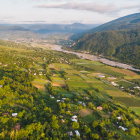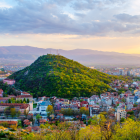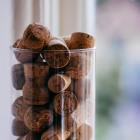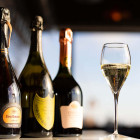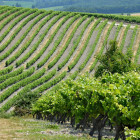
A 48-Hour Getaway in Champagne: The Ultimate Tasting Journey
Champagne isn’t just a drink. It’s a place, a mood, and a way of life. Just two hours from Paris by train or car, the Champagne region offers a deep dive into craftsmanship, history, and hedonistic pleasure. I recently returned from a whirlwind two-day trip through this storied landscape, where time moves slowly, but glasses empty quickly. Here’s how to do Champagne right without wasting a moment or a bubble.
Day One: A Classic Start in the Vallée de la Marne
Morning: Champagne Pierre Paillard, Bouzy
The village of Bouzy sits like a crown on the Montagne de Reims, surrounded by softly undulating vineyards and limestone slopes. It’s here that our trip began at Champagne Pierre Paillard. The Paillard brothers, Antoine and Quentin, are the eighth generation to farm these Pinot Noir-rich hills, and their approach blends tradition with vision. They craft elegant, mineral-driven Champagnes exclusively from their own organically farmed vineyards.
We started with a vineyard walk, guided through the mosaic of chalk and clay soils that define this Grand Cru terroir. Mist clung to the rows of vines in the early light, and the air was thick with the scent of damp earth and budding foliage. In the cellar, we sampled several cuvées, including the Bouzy Rouge, a still red Pinot Noir, rare and mostly enjoyed within France. But it was their Blanc de Noirs Les Maillerettes, a white Champagne made entirely from black-skinned Pinot Noir grapes, that truly captivated me: pure, chiselled, and brimming with energy.
Lunch: Bouzy Bistro Lunch
A short stroll took us to a sun-dappled bistro in the village square for lunch. Rustic stone walls and handwritten menus gave the place a quietly confident charm. Pairing regional dishes like creamy Chaource cheese and herb-roasted chicken with a crisp Paillard Brut Réserve reminded us why Champagne works so beautifully at the table, not just at toasts.
Afternoon: Champagne Philipponnat, Mareuil-sur-Aÿ
After a scenic 45-minute drive east through sleepy hamlets and vine-covered slopes, we arrived at Champagne Philipponnat in Mareuil-sur-Aÿ. Here, history runs deep. The family has been rooted in the region since 1522, but it’s their emblematic vineyard, Clos des Goisses, that steals the spotlight.
Clos des Goisses is perhaps the most iconic single vineyard in Champagne. Steep, sun-drenched, and planted with Pinot Noir and Chardonnay, it’s been bottled separately since 1935. Our private tasting included a vertical, a tasting of multiple vintages of Clos des Goisses, each glass revealing its own story. The 2012 stood out: rich, savoury, structured. This is Champagne for those who love the intensity and nuance of Burgundy.
If you're curious to learn more about the legacy behind Clos des Goisses, read our interview with Charles Philipponnat of Champagne Philipponnat.
Evening: Dinner at Champagne Henri Giraud, Aÿ
Dinner was hosted at Champagne Henri Giraud in Aÿ, where innovation and heritage go hand in hand. The drive into the village at dusk was dreamlike, with vineyards glowing under a lavender sky and church bells echoing faintly from the hilltops. Giraud is known for fermenting and ageing their wines in oak barrels made from the nearby Argonne Forest, which was once used to build royal fleets. The result is wines with unmistakable depth and structure.
Over a candlelit dinner of seared duck breast and wild mushroom fricassée, we tasted through their Esprit Nature and the more opulent Fût de Chêne. Giraud’s wines are unapologetically bold, a reflection of the Maison’s pioneering spirit. The evening felt intimate and generous, the kind of experience that reminds you why Champagne isn’t just a place but a feeling.
Day Two: Icons and Modern Legends
Morning: Market Walk and Coffee in Reims
After a restful night, we began our second day with a slower pace. Reims, home to grand cathedrals and cobbled markets, offered the perfect backdrop for a morning wander. The scent of fresh bread drifted from boulangeries as we sipped strong coffee and browsed the stalls at the Marché du Boulingrin, where locals shop for cheese, flowers, and charcuterie. A pause like this feels essential in Champagne because here, luxury is as much about stillness as sparkle.
Lunch: Maison Rare Champagne, Reims
Late morning brought us to something decidedly more contemporary: Rare Champagne. Originally born from Piper-Heidsieck’s prestige cuvée, Rare is now its own Maison, crafting limited-production wines that embody haute couture elegance.
The Rare Rosé Millésime 2012, served with a refined lunch at the estate, was the highlight, lush but precise, with notes of blood orange, rose petal, and pink pepper. Rare’s wines aren’t showy. They’re sculpted and self-assured, where detail, whether in packaging or profile, is everything.
Afternoon: Dom Pérignon, Hautvillers
No Champagne journey feels complete without a stop at Dom Pérignon. Set high above the Marne Valley in the Benedictine village of Hautvillers. This is both a mythical and spiritual destination. Legend has it that Dom Pierre Pérignon himself whispered, “I’m tasting the stars” here in the 17th century.
Dom Pérignon doesn’t open its doors to just anyone, so this was a privileged appointment. The tasting was meditative. The 2013 Dom Pérignon, recently released, offered a firm backbone, citrus oils, and that tell-tale smoky precision. The P2 2004, aged longer on lees for added depth, revealed a more layered and contemplative side. You feel the reverence for time in every detail, from the silence of the cellars to the quiet confidence of the wine.
Here, slowness isn’t delayed. It’s devotion. Dom Pérignon isn’t just Champagne. It’s a philosophy.
Evening: Farewell Dinner at Ruinart
Our journey ended with dinner at Maison Ruinart, the oldest Champagne house, founded in 1729. Descending into their historic chalk cellars, the Crayères, now a UNESCO-listed site, felt like entering a sacred space. Light filtered down through the vaulted chambers, illuminating the centuries-old graffiti etched into the walls, much like in a cathedral.
Dinner was elegant and serene, matched with Ruinart’s refined Blanc de Blancs and the luminous Dom Ruinart 2010. These wines are studied in restraint, exhibiting floral, textural, and bright characteristics. As we dined beneath stone ceilings carved before the French Revolution, it was hard not to reflect on how this region harmonises the old and the new, the monastic and the glamorous.
Two Days, One Sparkling Soul
What struck me most on this trip was not only the diversity of styles but the philosophical undercurrents of Champagne, precision, patience, and purpose. From organically farmed Grand Crus to cutting-edge prestige cuvées, this region gracefully holds its contradictions.
On our last night, as the final glass caught the candlelight and the cellars exhaled their ancient chill, I thought: no matter how many times you come here, Champagne still finds a way to surprise you. And that, perhaps, is its greatest charm. Until next time, à votre santé.

